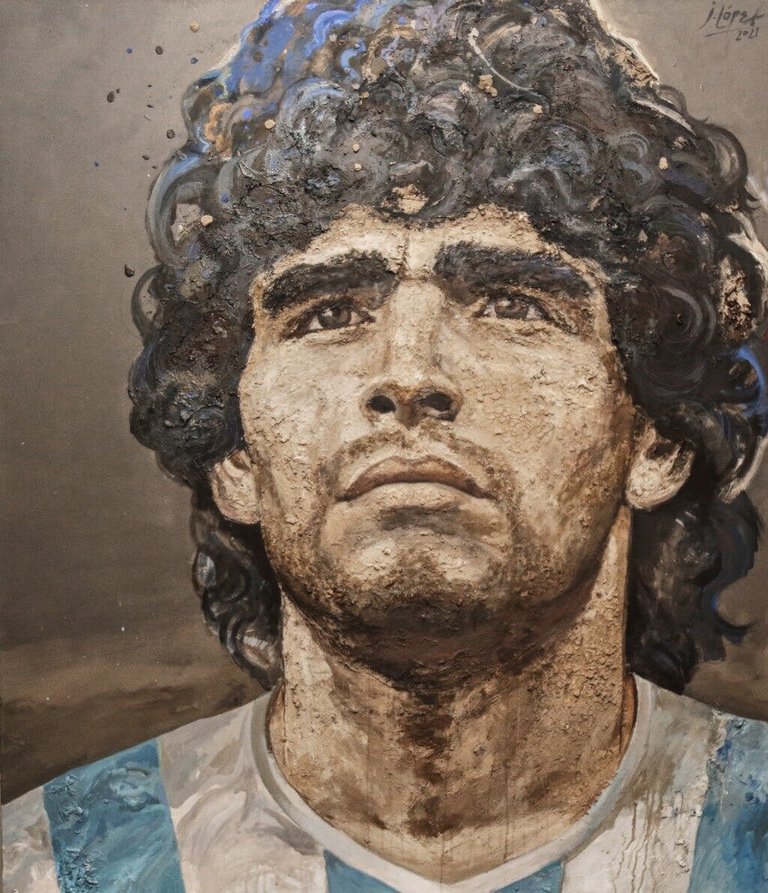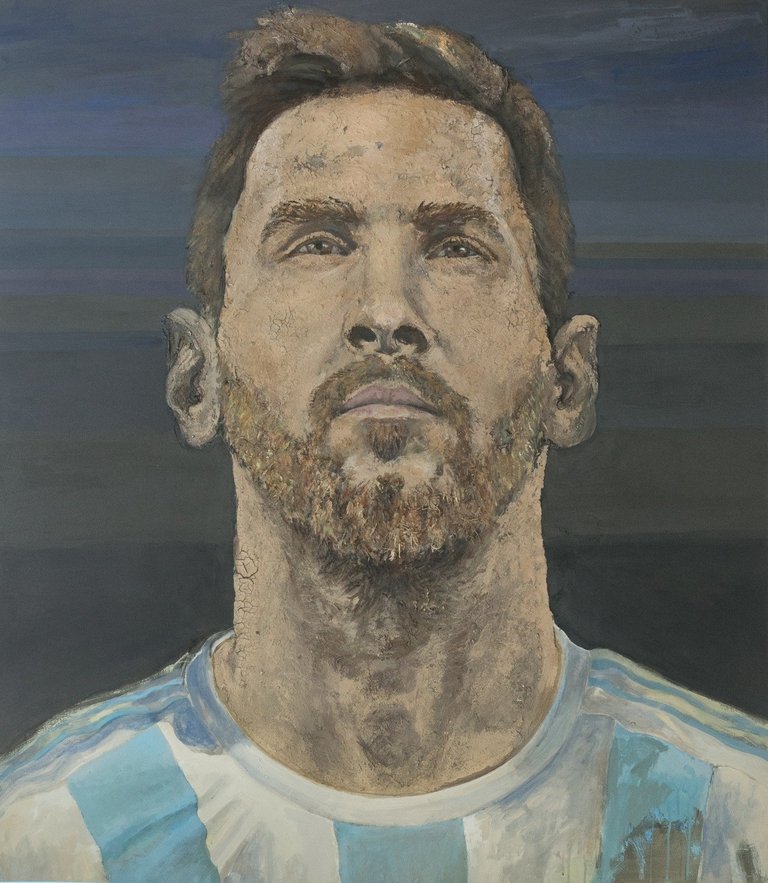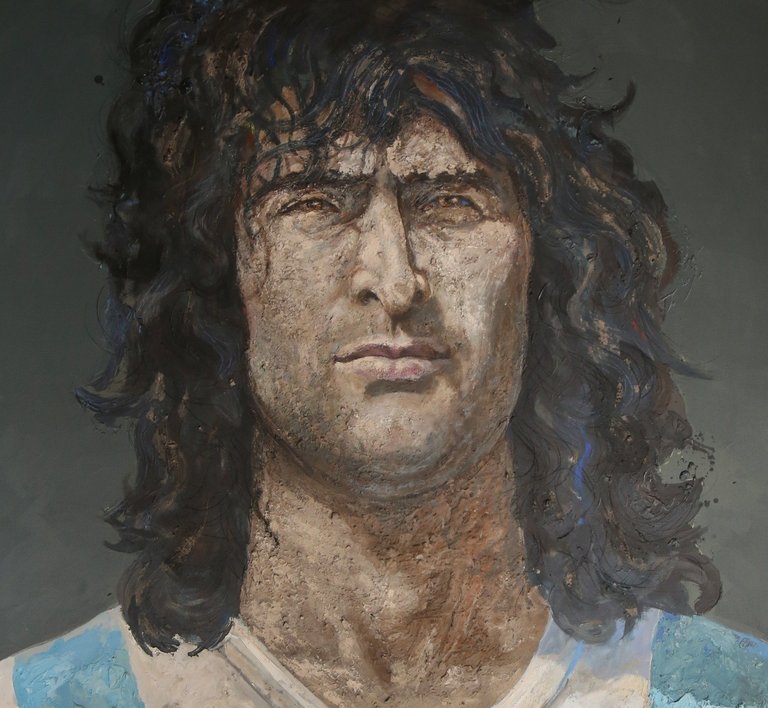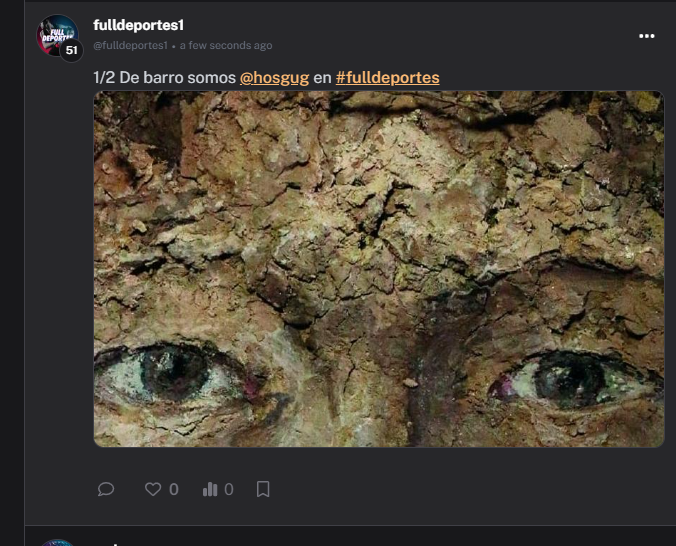
En mi país el amor por el fútbol y sus ídolos es algo que trasciende a la mayoría de los habitantes. Sinceramente no conozco el motivo exacto de esa predilección en particular, quizás debamos remontarnos a muchos años atrás cuando la única diversión para los chicos era jugar en la calle, en los potreros y con una pelota. Imagino muchas similitudes con el proceso que se desarrolló en Estados Unidos y por derrame en los países más cercanos con el beisbol.
Estimo que debe haber influido en esa predilección el primer campeonato mundial desarrollado en Uruguay donde tanto el país anfitrión como nuestra selección demostraron una buena superioridad sobre el resto de América y Europa, decididamente ello debe haber provocado un enorme impulso, éramos de los mejores del mundo y se había demostrado cabalmente en 1930.

Por supuesto todas las actividades humanas se ven reflejadas en lo artístico y el fútbol no escapa a ello. Un artista plástico proveniente de San Pedro, provincia de Buenos Aires ha desarrollado una técnica atípica para expresar su arte y su vez honrar a nuestros héroes del fútbol.
Jorge "Coqui" López es oriundo de una zona donde la agricultura y por supuesto la tierra juegan un papel principalísimo en su desarrollo y en el bienestar de sus habitantes, por lo tanto, no sorprende que tenga una atracción especial por ella, Coqui menciona en sus conversaciones que la tierra que pisamos guarda esa memoria.

Debido a ese proceso de pensamiento emocional algunos años atrás decidió que confeccionar retratos con barro hecho de la tierra que habían pisado era una forma de plasmar la historia y los sentimientos de los retratados.
Salió con una bolsa y una pequeña pala y se fue para Villa Fiorito en pleno conurbano bonaerense, lugar donde nació Diego Armando Maradona, se paró frente a la modesta casa de su infancia y con la pala juntó tierra y pasto del descuidado jardín delantero, con esa tierra mezclada con agua formó el retrato del histórico capitán de la gesta de México 1986 e Italia 1990.
Luego de finalizada esa obra de arte realizó un proceso similar, fue hasta Rosario y juntó tierra y pasto de varios lugares en los que se formó el fantástico Lionel Messi, recolectó esos mismos materiales de su casa, del potrero donde se lo veía correr y desplegar su habilidad desde muy pequeño y también de la cancha de Newell's Old Boys, club donde jugó en esa temprana edad hasta que se fue a España para recalar en Barcelona. Con esos pocos materiales hizo su segundo retrato del siguiente ídolo futbolístico local.
Pero le faltaba uno para concluir una trilogía que se había propuesto, debía rendir homenaje al tercer equipo y a un gran jugador de aquella selección que consiguió la primera estrella mundialista en 1978, el elegido fue Mario Alberto Kempes, goleador y mejor jugador de aquel mundial disputado en nuestro país.
Coqui López se dirigió a Bell Ville, localidad de la provincia de Córdoba, lugar donde nació "el matador" como se lo conoció en sus años de futbolista donde brilló a fuerza de goles; nuevamente el mismo proceso, le permitieron entrar a la casa natal y tomó tierra de su patio trasero, luego se dirigió a la cancha de Talleres de Bell Ville donde Kempes comenzó su carrera como futbolista para buscar esa memoria que le permitiera hacer un retrato que trascendiera el simple efecto de una obra para convertirse en algo trascendental que trasmitiera no solamente el rostro sino también el sacrificio, las horas de entrenamiento, los golpes, el trabajo y finalmente el triunfo. Tal como había hecho con las de Messi y Maradona.

El artista asegura que, si se cae una lágrima a la tierra, su memoria queda ahí, lo mismo que una gota de sudor, los gritos de los jugadores, el retumbar de la pelota y la algarabía del público, por ello eligió esa forma de trabajar y con esos materiales.
¿Qué se puede agregar? solo que estoy totalmente de acuerdo.
Of mud we are
In my country, love for football and its idols is something that transcends most of the inhabitants. I sincerely do not know the exact reason for that predilection in particular, we may have to go back many years when the only fun for the boys was to play on the street, in the solar, and with a ball. I imagine many similarities with the process that was developed in the United States and by spilling in the closest countries with baseball.
I estimate that the first world championship developed in Uruguay should have influenced the predilection where both the host country and our selection demonstrated a good superiority over the rest of America and Europe, decidedly this must have caused a huge impulse, we were the best in the world and had been fully demonstrated in 1930.
Of course, all human activities are reflected in the arts and football does not escape. A plastic artist from San Pedro, province of Buenos Aires has developed an atypical technique to express his art and in turn to honor our heroes of football.
Jorge "Coqui" López is a native of an area where agriculture and of course the Earth play a very main role in its development and the well-being of its inhabitants, therefore, it is not surprising that it has a special attraction for it, Coqui mentions in His conversations that the land we step on keeps that memory:
Due to this process of emotional thinking, a few years ago he decided that making portraits with mud made of the earth they had stepped on was a way of capturing the history and feelings of the portrayed.
He left with a bag and a small shovel and went to Villa Fiorito in the Buenos Aires suburbs, where Diego Armando Maradona was born, stood in front of the modest house of his childhood and with the shovel gathered earth and grass from the neglected front garden, with that earth mixed with water he formed the portrait of the historic captain of the deed of Mexico 1986 and Italy 1990.
After finishing that work of art, he carried out a similar process, he went to Rosario and gathered earth and grass from various places where the fantastic Lionel Messi was formed, he collected those same materials from his house, from the solar where he was seen running and displaying his ability from a very young age and also from the Newell's Old Boys court, the club where he played at that early age until he went to Spain to end up in Barcelona. With those few materials, he made his second portrait of the next local soccer idol.
But he lacked one to conclude a trilogy that had been proposed, he had to pay tribute to the third team and a great player of that selection that won the first World Cup star in 1978, the chosen one was Mario Alberto Kempes, scorer and best player of that World Cup disputed in our country.
Coqui López went to Bell Ville, a town in the province of Córdoba, where "El Matador" was born as he was known as a soccer player who shone by force of goals; Again the same process, and they allowed him to enter the home house and took land from his backyard, then went to the Bell Ville workshop court where Kempes began his career as a footballer to find that memory that allowed him to make a portrait that transcended The simple effect of a work to become something transcendental that transmitted not only the face but also the sacrifice, the hours of training, the blows, the work and finally the triumph. As he had done with those of Messi and Maradona.
The artist says that, if a tear falls to the earth, his memory is there, the same as a drop of sweat, the screams of the players, the rumbling of the ball, and the algarabía of the public, so he chose that form of work and with those materials.
What can be added? Only I totally agree.
Héctor Gugliermo
@hosgug
